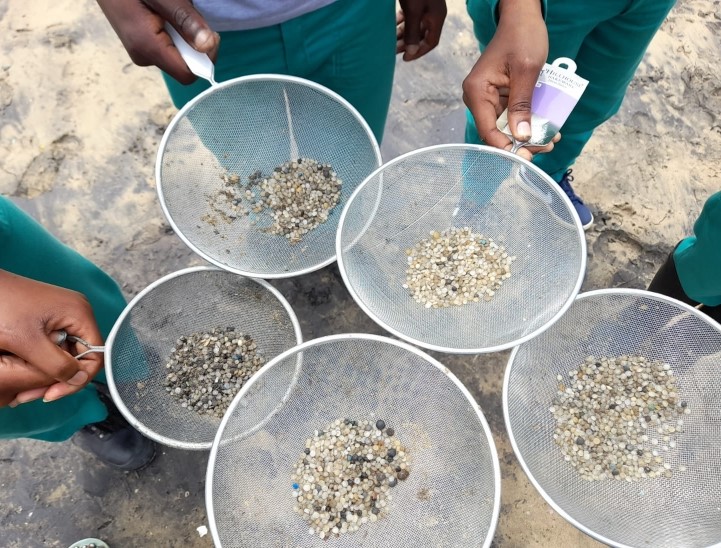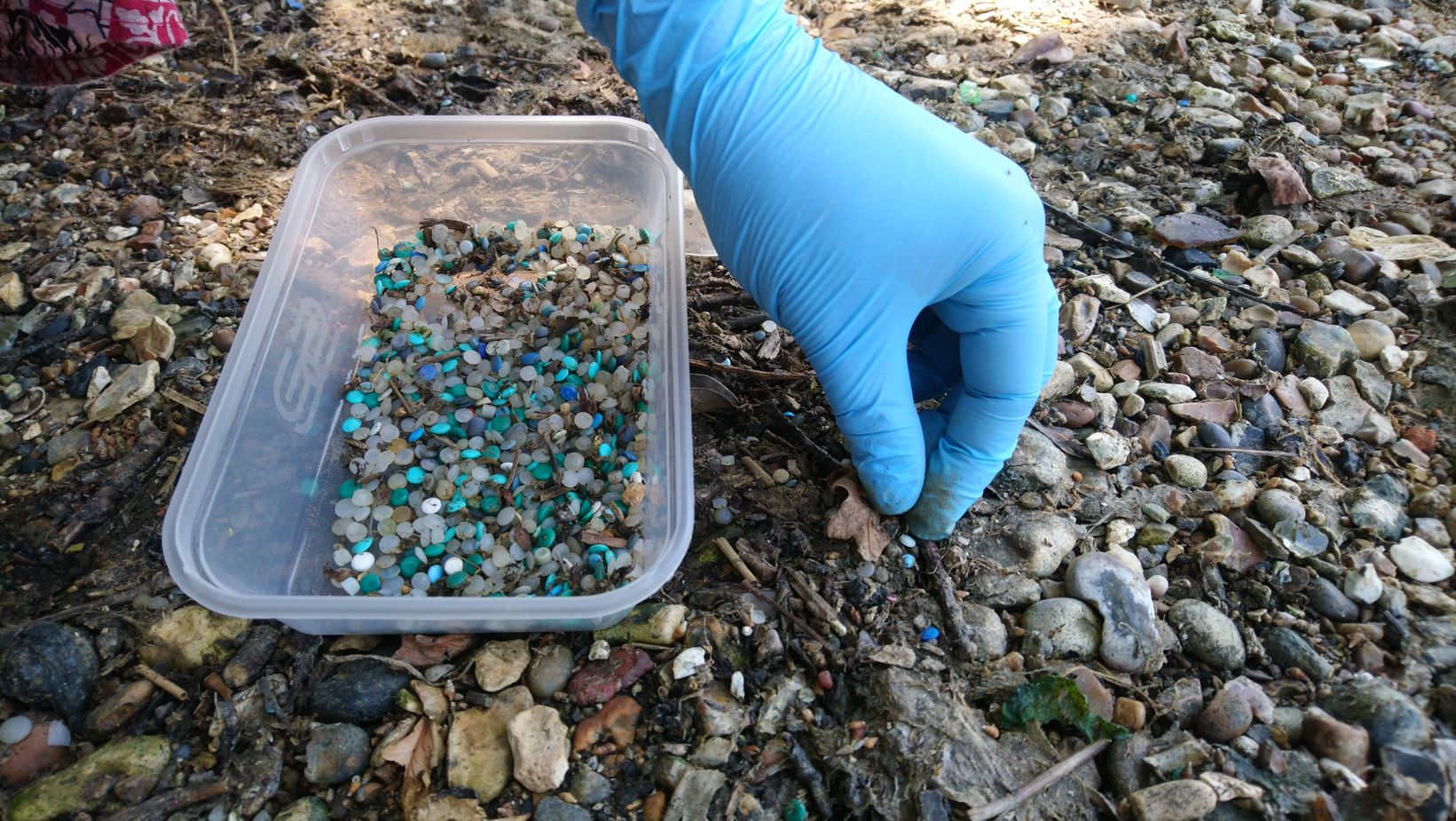Take Part
How to Nurdle Hunt
1. Choose a location
2. Search for nurdles
3. Count how many nurdles you find
4. Record how long you searched and how many people took part. Pictures are great too!
5. Submit your results via our website or our nurdle hunt app
Anyone can take part, and you need no special equipment or training!
Download our Nurdle Hunt App!
Designed to make nurdle hunting easier than ever! Log your findings quickly even without an internet connection and use the built-in counter to effortlessly track how many you find. Download on app stores now!
Where and When to Nurdle Hunt?
- Along shorelines especially on sandy beaches and near headlands. You can also hunt along riverbanks, lakeshores and estuaries.
- After high water is the best time to search for nurdles as they are washed up from the last tide or after periods of high-water along riverbanks.
- Look along the high water line, nurdles can get caught in other debris washing up too. Also check cracks in rocks and along sea walls. Nurdles can be blown on inland too, look alongside paths, among vegetation and in dunes.
- Always use your judgement and only hunt when safe to do so. Always check weather conditions and ensure tides and water levels are safe.

Photo credit: Wild Oceans South Africa
How to identify a nurdle?
Nurdles can be hard to spot! They are very small and their colour often blends in with the sand. When hunting slow down and get close to the ground.

The different shapes and colours of nurdles
Colour:
Most nurdles are clear or white, but they become yellow over time. You may find coloured nurdles too e.g., blue, yellow, black and grey.
Size and Shape:
Between 3-5mm in diameter, shaped like a lentil and often smooth
Download our Nurdle ID sheet to help you!

Photo Credit: Extinction Rebellion
Collecting nurdles
Be safe when nurdle hunting
You don’t have to collect the nurdles you find, the most important part is recording the number of nurdles you find. We encourage you to submit your findings even if you did not find any nurdles.
If you want to collect the nurdles, we recommend wearing gloves and washing your hands thoroughly after touching any beach debris. Nurdles can be contaminated with harmful chemicals and bacteria. A pair of tweezers or a sieve also helps separate the nurdles from the sand.
What to do with the nurdles you find?
What to do with collected nurdles
- Put them on display – store your nurdles in a jar and use them to help raise awareness.
- Contribute to science – some scientists in Japan have been studying toxic chemicals associated with nurdles. You can send samples of your pellets to their lab to contribute to this work. Find out more – www.pelletwatch.org. In addition to this, a research group in Swansea need nurdles too. Please check the requirements of how these labs want nurdles to be handled before sending them directly.
- Send to an artist – Check out artists in your local area/country who may do work with nurdles for raising awareness about plastic pollution. We can recommend sending your nurdles to Maarten Vanden Eynde's latest exhibition in the UK. Maarten Vanden Eynde is creating an art project tackling plastic nurdles pollution.
- Bin securely – Currently nurdles can’t be recycled. If you decide to throw them away, place them in a sealed container or multiple layers of carrier bags (so the bag doesn’t split and spill nurdles into the environment). Not ideal we know, but that's why we want to stop them entering our environment in the first place.
Resources
Useful resources to help you while nurdle hunting.
- Nurdle ID & recording sheet – Guide to help you tell your bio-beads from your BB pellets, nurdles from your non-plastics
- Nurdle Hunt Top Tips – Handly tips and more details on nurdle hunting
- Nurdle Hunt Guide – A leaflet you can print to promote nurdle hunting
- Global Nurdle Hunt 2025 Participant Pack – All the information you need to take part in this year's Great Global Nurdle Hunt 1-31 October 2025.